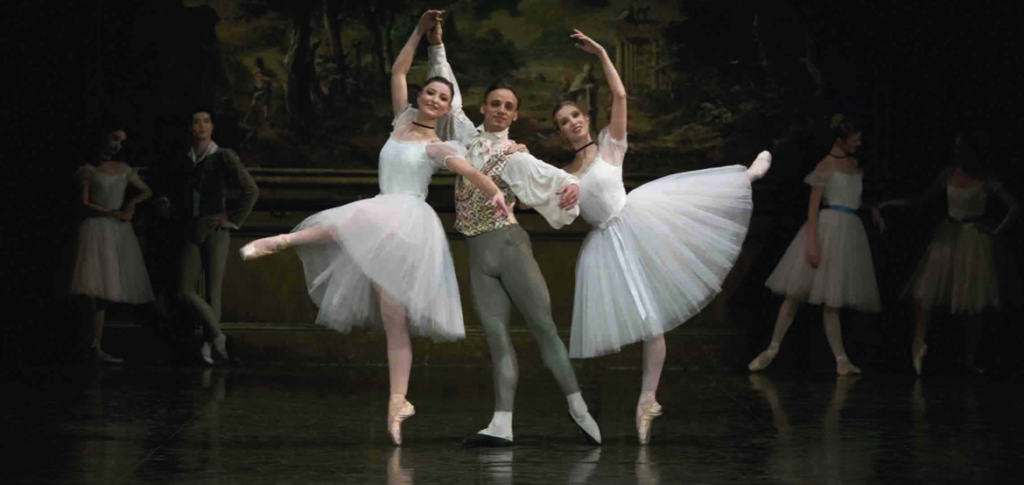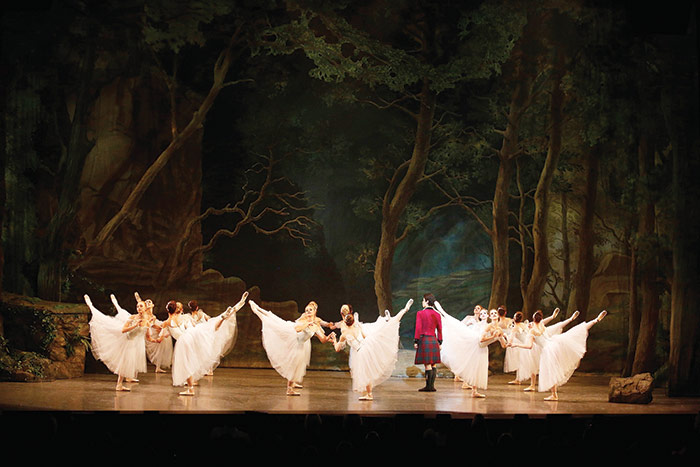
How the visionary Bournonvile came to develop a dancing style that would forever become the unique hallmark of Danish ballet.
Say “ballet” in Denmark, and before long you’ll hear one name: Bournonville. The Danes pronounce it: Bonn-ville.
That’s, of course, August Bournonville, the 19th century dancer and ballet master responsible for developing a uniquely Danish way of dancing.

I visited Copenhagen’s Royal Theatre, home to both the Royal Danish Ballet and its School, to learn more about Bournonville from his rightful ballet heirs.
There I met Fernando Mora, a Mexican dancer who made his career with the Royal Danish Ballet, and now teaches at the company’s School. How had he become interested in the Royal Danish Ballet? I asked.
“Well, it all started with Bournonville.”
Mora told me how, as a ballet student in his native Mexico, he came across the TV documentary series Dancer, presented by Peter Schaufuss, one of the 20th century’s foremost exponents of the Bournonville style.
It was Mora’s first contact with Bournonville. It was a revelation. He was hooked.
What is it about the Bournonville style that so fascinates and hooks dancers and audiences alike? I sought help from the experts.

The writer and ballet critic Ebbe Mørk, says one of its most distinctive features is “the illusion of imponderable lightness.”
So much so, that the greatest Danish male dancer of the 20th century, Erik Bruhn, wrote in the book he co-authored, Bournonville and Ballet Technique:
“In dancing Bournonville, the dancers often feel they spend more time in the air that on the floor.”
Two things came together to create the Bournonville style.
Firstly, as a young ballet student August (1805-1879) accompanied his ballet master father to Paris, then the centre of the ballet world.
This was the Romantic period and August was exposed to the latest trends in the world’s oldest and most prestigious ballet company, the Paris Opera Ballet.
When he returned to his native Copenhagen and joined the Royal Danish Ballet, he found the repertoire boring and old-fashioned.
So, upon becoming choreographer for the company in 1830, and subsequently its director, he set about changing things.
He did so with pieces that Ebbe Mørk describes as “indelibly stamped with the spirit of Romanticism.”
Secondly, and just as importantly, Bournonvile created the chief roles of his ballets with himself in mind.
As the eminent Professor of Dance History, Erik Aschengreen, points out, Bournonville was not the tall, elegant danseur noble type.
“He was a shortish, but quick, nimble and adroit dancer, with a talent for the light-footed allegro dance.”
He was also a dancer of virtuosity and temper, but one who avoided “sheer bravura, as in his opinion dance should serve a higher purpose.”
And its higher purpose was storytelling, says Ebbe Mørk:
“His steps hold forth a continual storyline, never to be disturbed by spectacular bravura.”
His own highest ideal was “to make the most complicated technique look flawless.”
This, says Mørk, is amply illustrated by the dances from Napoli, the ballet which, in his view, shows us Bournonville at his most brilliant.
So, the illusion of lightness is one of the key features of the Bournonville style. Beyond that,
“There is a lot of delicate batterie.
“Jumps are never finished with a sustained position to disguise an abrupt landing, but often with a plié.
“Every climax in technique, every big leap or elegant turn, is founded on logical preparations in those currents of minor connecting steps which are the hallmark of his style.”
Mørk notes also that Bournonville follows the music but will often employ a musical accent in an unexpected way, for example, “syncopating steps that are normally executed smoothly.”
The Bournonville style is the main reason why, when we think of Danish ballet, it’s its male dancers that first come to mind; but, as Erik Aschengreen remarks,
“men alone do not make a ballet, certainly not in the age of Romanticism.”
So, Bournonville – who as a young man had partnered the great Marie Taglioni in Paris – created difficult challenges for his female dancers, too.
“They are light. Their dancing is soft and graceful, their jumps nimble and swift.
“They seem to touch the floor only to set off again.
“And always it looks effortless – when performed as it should be.”
Aschengreen goes on to argue that it is very difficult to master the lightness of the Bournonville style, and this is particularly apparent,
“when dancers trained in the great Russian or the Balanchine style try to get a footing in the world of Bournonville.”
Danish dancers and critics consider the sunny, joyful Napoli, inspired by the Romantic fascination with the exotic Mediterranean and its colourful characters, perhaps the most accomplished of Bournonville’s many ballets.
However, the one ballet that seems to have caught the imagination of dancers and audiences the world over is La Sylphide.

The Paris Opera created and owned the original La Sylphide, and Bournonville had intended to mount it in Copenhagen; but such were the obstacles raised by Paris, that he decided to choreograph his own version, based on the original libretto.
Bournonville’s La Sylphide is the only version that survives today.
It tells the über-Romantic story of a doomed love between a wood sylph and a feckless bridegroom to be, the young Scotsman, James.
Along with Gennaro, Napoli’s larky Fisherman, James was very much the favourite role of Thomas Lund, one of the most celebrated Bournonville dancers of his generation.
Lund is now the Director of the Royal Danish Ballet School, a job he took on following his retirement from dancing in 2012. He told me:
“For a Danish dancer, James is like Hamlet for any actor.”
Stressing that the Bournonville style demands an ability to act and master a specific kind of naturalistic mime, Lund went on:
“James requires a combination of dancing and acting. Also, it’s important that as a dancer you keep developing this role over the years.”
For Lund, dancing James throughout his career was “a journey, where you’re privileged to go back and see how you’ve been doing something.
“(…) You start to compare your own life with what you are doing on stage, and then you can understand what you are doing.”
So important was James for Lund that he chose La Sylphide as one of the pieces for his farewell performance at Copenhagen’s Royal Theatre.
August Bournonville gave Danish ballet an identity of which it is justly proud, and some of his prolific repertoire survives – and delights! – to this day.
The Bournonville style remains the basis from which everything else springs, and is imparted to students of the Royal Danish Ballet School like “mother’s milk,” in the words of Thomas Lund.
Erik Aschengreen puts it this way:
“The [Danish] dancer of today feels the after-effects of Bournonville on his body, as well as on his mind.
“They are there to be seen every time the Acropolis curtain rises on the Royal Theatre stage.”
E N D

Very m¨ch appreciated! Wonderful